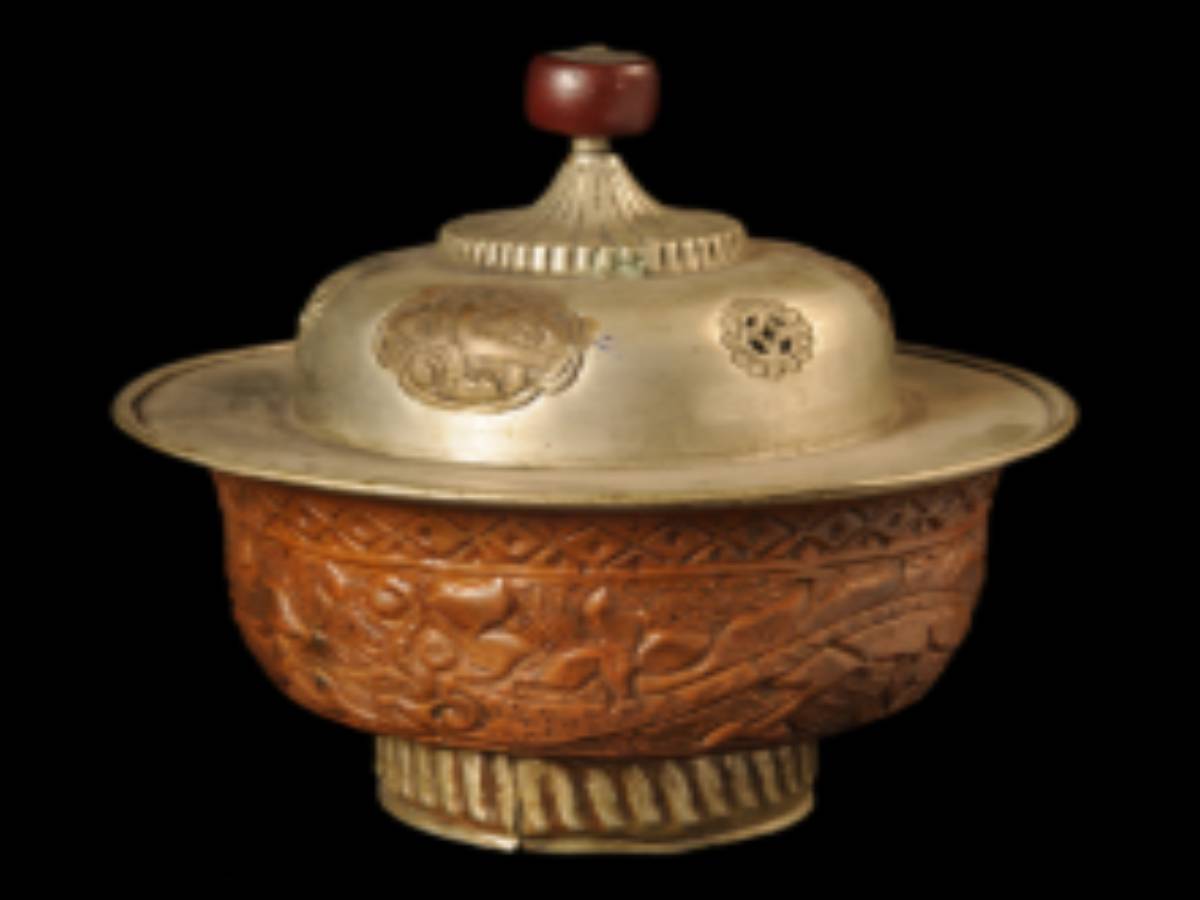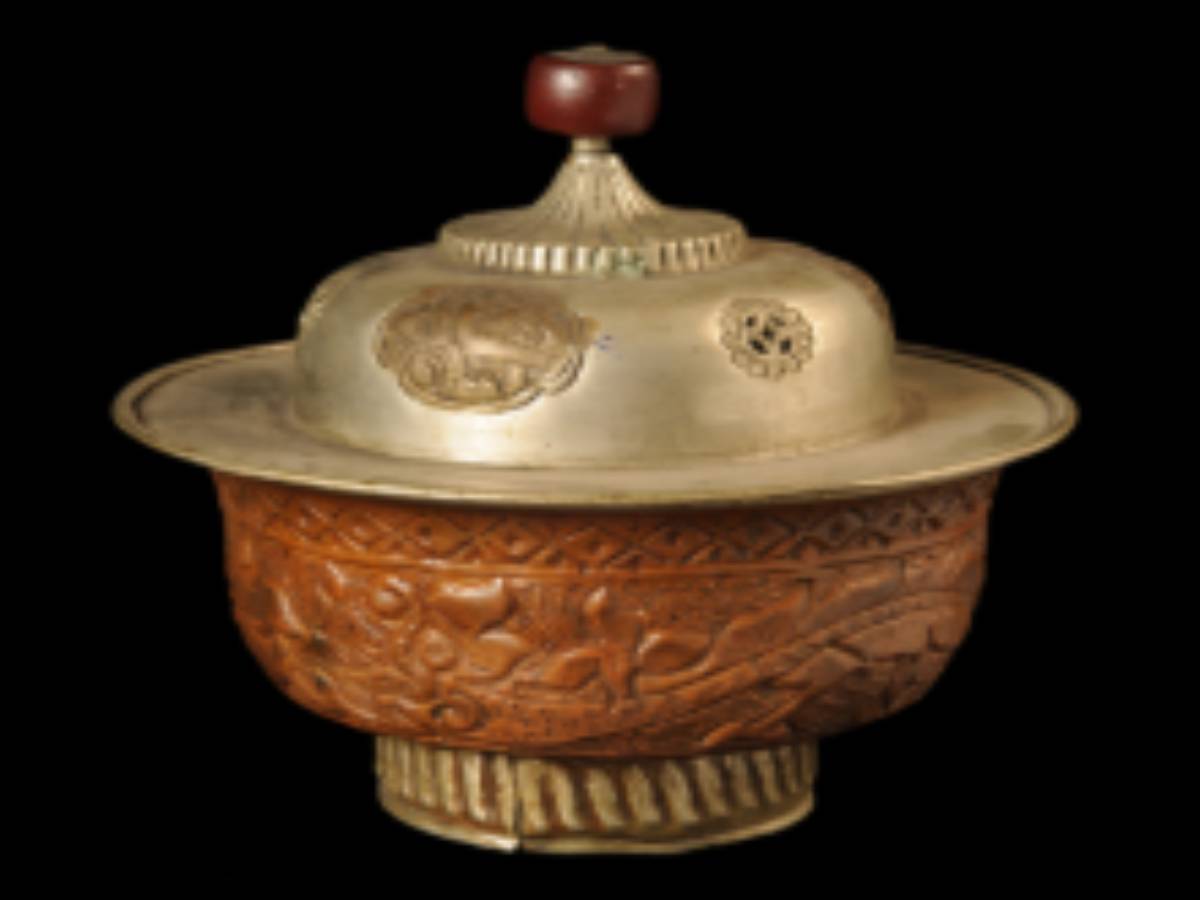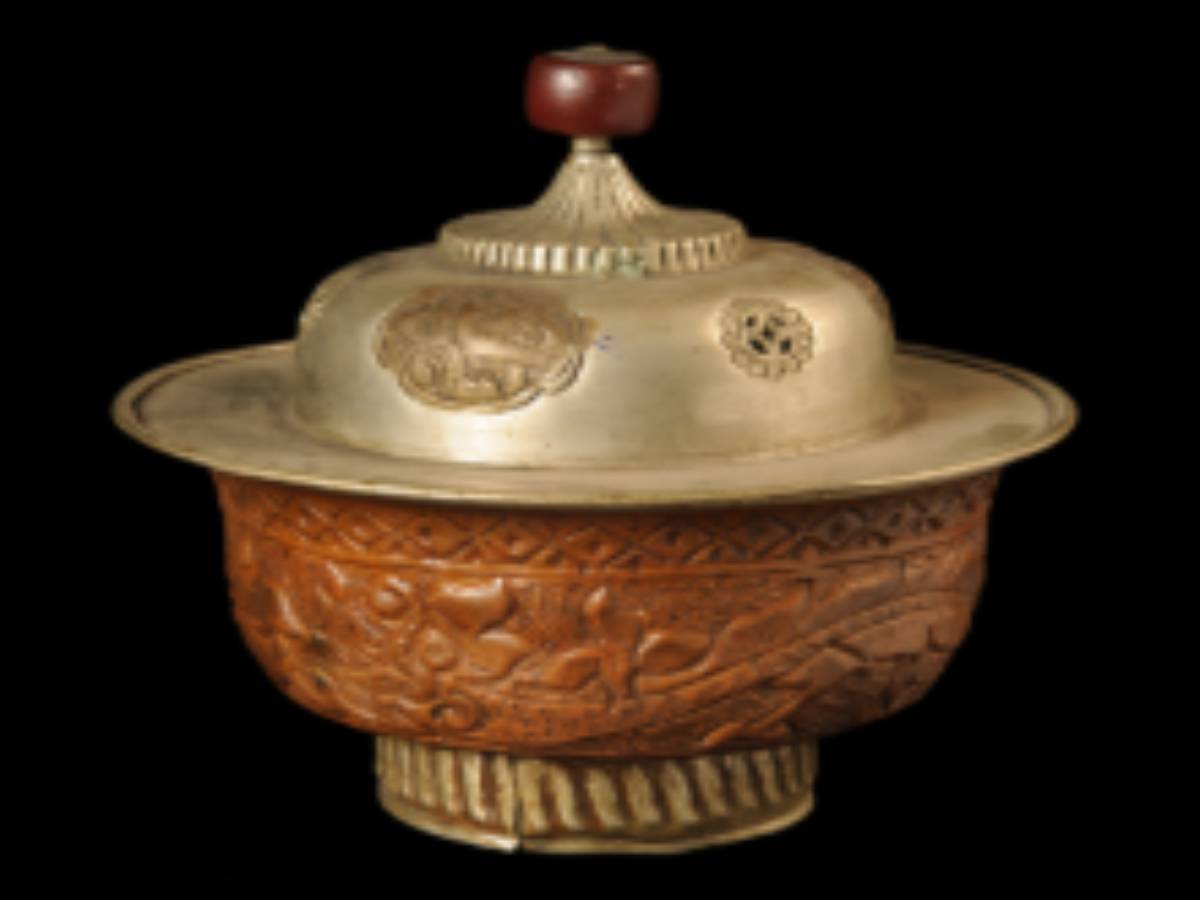State
Tribe Name
Art Type
short description
This copper bowl with lid signifies the cultural and traditional object of the Bhutia community, an ethnic group largely found in the state of Sikkim, India; and in smaller regions of West Bengal and Bhutan; Tibet, with all the Tibetan cultural and religious influences, has inherited a fine heritage, and art reflects the statements of aesthetic perfection and utility. This bowl is an open work in copper-a metal the Bhutia people usually possess almost in every household due to antimicrobial properties and very cultural importance. The base rises and rounds from the floor, giving it an elaborate hold and poised appearance. The entire surface of the bowl is lined with a copper sheet having designs, which are mostly engraved or embossed, symbolical-mostly with flora or geometrical patterns that are common in the Himalayan art traditions.
Thumbnail

Filter Postion
Left
Filter Background
Off
Theme
Filter Header Image

content
Image

description
This copper bowl with lid signifies the cultural and traditional object of the Bhutia community, an ethnic group largely found in the state of Sikkim, India; and in smaller regions of West Bengal and Bhutan; Tibet, with all the Tibetan cultural and religious influences, has inherited a fine heritage, and art reflects the statements of aesthetic perfection and utility. This bowl is an open work in copper-a metal the Bhutia people usually possess almost in every household due to antimicrobial properties and very cultural importance. The base rises and rounds from the floor, giving it an elaborate hold and poised appearance. The entire surface of the bowl is lined with a copper sheet having designs, which are mostly engraved or embossed, symbolical-mostly with flora or geometrical patterns that are common in the Himalayan art traditions.
The very lid of the bowl is made of white metal and probably alloyed with tin or nickel, giving an added contrast to the warmth of the bowl. An elaborate ornamentation and the intricateness in the lid shows the artistic sensibility of Bhutia metalworkers. The lids have a small wood-like part affixed on the outer surface at the center, which serves as a handle, thereby adding a natural texture to the otherwise metallic item. Traditionally, these bowls are used for the storage and serving of food or ritual offerings, especially during festivals, religious ceremonies, and occasions at home, epitomizing use as well as religious significance.
The very lid of the bowl is made of white metal and probably alloyed with tin or nickel, giving an added contrast to the warmth of the bowl. An elaborate ornamentation and the intricateness in the lid shows the artistic sensibility of Bhutia metalworkers. The lids have a small wood-like part affixed on the outer surface at the center, which serves as a handle, thereby adding a natural texture to the otherwise metallic item. Traditionally, these bowls are used for the storage and serving of food or ritual offerings, especially during festivals, religious ceremonies, and occasions at home, epitomizing use as well as religious significance.
Image Mode
landscape
promoted
Off
Verified
Off
